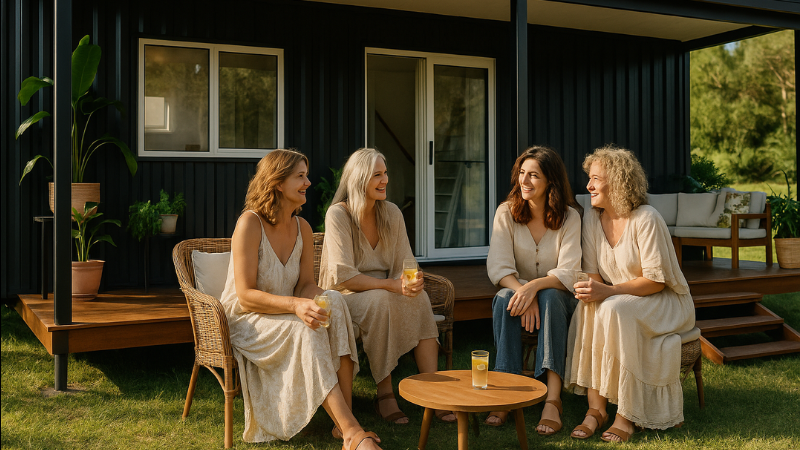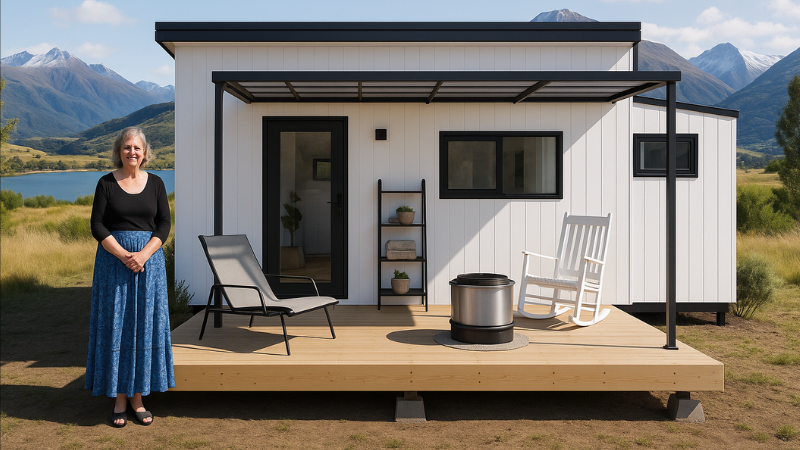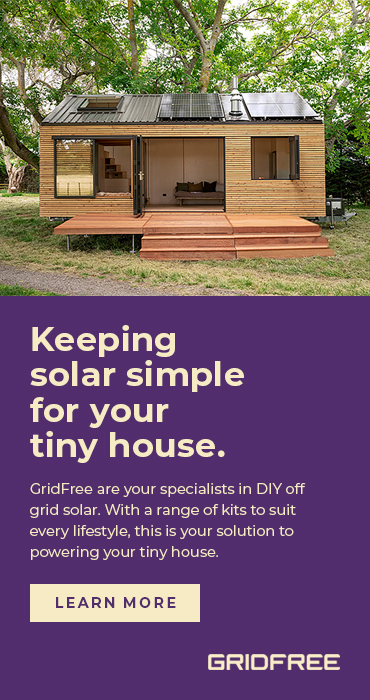When Kathryn moved into her tiny home, it wasn’t the lack of space that unnerved her. It was the Tupperware. Forty-three mismatched lids and containers, some cracked, others lidless, all of them stuffed into a cupboard she no longer had.
“I stood there, holding this stupid plastic container, and just started crying,” she laughs now. “I wasn’t crying about the Tupperware. I was grieving the version of me who thought I needed that much kitchen.”
Kathryn, 56, had spent decades accumulating. A four-bedroom house, a career in education, three kids, a linen cupboard full of spare duvets and towels for guests that never came. But after a messy divorce and her youngest moving overseas, the house that once held so much life began to feel like a burden.
“It was too big, too empty, and too expensive to heat,” she says. “I didn’t want to be that woman stuck in a cold house watching re-runs with a blanket on her knees.” So she sold it. The house, the furniture, the too-many wine glasses. And she bought a tiny house on wheels and leased a patch of land outside Taupō. “I went from four bedrooms to one room. But I’ve never felt so free.”
Across the motu, more women are doing the same. Choosing to let go of the big house, the mortgage, the ‘just-in-case’ clutter, and stepping into something smaller, but lighter, in every sense of the word.
Shrinking the house, growing the life
Louise, 63, lost her husband to cancer, and with him, the only person she truly wanted to share her forever home with. “I tried to stay,” she says. “But the house became a mausoleum. His things were everywhere. And the silence… it was deafening.”
At first, she looked at downsizing into a flat. But a friend sent her a link to a tiny house builder. “I thought, why not?” Three months later, Louise moved into her 8m tiny house and parked it on her daughter’s rural section in Levin.
“The first night, I lay in bed and cried with relief. It was mine. It was warm. It was enough.”
Now, her days are filled with morning walks, baking for her grandkids, and painting at a little fold-out table by the window. “There’s not a thing I miss from the old house,” she says. “Except maybe the lemon tree. But I planted a new one here.”
Theresa's reboot in 27 square metres
Theresa, 49, was burnt out after years as an office manager. “I’d been holding everything together for everyone, work, ageing parents, the house, my own expectations. But I was sinking.”
She took a long weekend road trip to clear her head. “I didn’t plan on it, but I just… kept driving. I lived out of my car and a chilly bin for nearly three months. That’s when I realised how little I actually needed.”Returning home felt like stepping back into a life that didn’t fit anymore. So she sold her belongings, gave notice on her rental, and commissioned a tiny house to be built. “I’d never imagined myself in a tiny house, I thought they were for backpackers or hipsters. But once I walked into one, it was like my nervous system calmed down.” Now her 12m home is parked at a quiet site near Napier, where she wakes to birdsong, drinks her coffee in bare feet, and knows exactly where everything she owns is. “Tiny living gave me back my peace. I thought I was downsizing, but really, I was starting over.”
Nina: “My garage was a museum of my past life”
At 52, Nina had reached a point of quiet resignation. A three-bedroom rental in the Bay of Plenty. A grown son overseas. Boxes in the garage full of camping gear, broken photo frames, and shoes she hadn’t worn in a decade. “My house felt like it belonged to someone else. Someone busier. Someone sadder.” When her lease ended, she decided not to renew it. Instead, she bought a second-hand tiny house and leased a space on a farm with two other women in similar stages of life. Her greyhound, Sarah Jessica Barker, moved in too. “It was chaos at first, you don’t realise how many mugs you own until you have nowhere to put them. But the clarity came quickly. I only kept what made me feel good.” She gave away 90% of her stuff. Her weekends, once full of vacuuming and errands, are now spent gardening, cycling, and reading library books in the sun. “The clutter stole my time,” she says. “Getting rid of it gave it back.”
For every woman interviewed, moving into a tiny home was not simply a downsizing. It was a letting go of shoulds, of guilt, of the weight of other people’s expectations.
“I looked around and thought, why am I still carrying this?” she says. “These weren’t heirlooms. These were obligations. ”In the end, she kept a few letters, a photo album, and a ceramic teapot shaped like a chicken, “just because it makes me smile.” The rest went to op shops, recycling, or the tip. “I thought it would be sad,” she says. “But it was liberating. It felt like I was clearing space for my actual life to begin.” Theresa remembers sitting in her storage unit, surrounded by a sea of boxes labelled wedding gifts, Mum’s stuff, Year 12.
What do you really need to feel at home?
Tiny homes are not a magic fix. There are practical challenges: limited storage, composting toilets, and learning to live with less. But for the women in this story, none of those things were dealbreakers. In fact, many said they wish they’d done it sooner.
Kathryn, who now lives debt-free with her vegetable garden and a dog called Frankie, puts it like this: “I used to live in a house where I couldn’t afford to fix the roof. Now I live in a home where I can afford to say yes to myself.” What she gave up in square metres, she gained in freedom. And freedom, it turns out, doesn’t need a walk-in wardrobe.
It needs a place to breathe, a window with a view, and the courage to say: this is enough.



